Aconcagua is the highest peak in the Americas and part of the Seven Summits challenge, while Ojos del Salado is the highest active volcano in the Americas and part of the Seven Volcanic Summits challenge. Both are in the Andes mountain range, the first in Argentina, the second in Chile. They are accessible most of the time without any equipment or technical knowledge, but still represent a real challenge due to the rapid acclimatisation, violent winds, unpredictable weather and extreme dryness of the air. Here's a look back at our two winter expeditions. Franck tells us about his experience on Aconcagua, while Laurent reflects on his eventful ascent of Ojos del Salado.
Join the Seven Summits challenge.
Join the Seven Volcanic Summits challenge.
Ojos del Salado summit expedition (6,893 m)
© Laurent Beaujard
Why Ojos del Salado?
Laurent: In a spirit of discovery, I wanted to go to a picturesque place where I'd never been before. With a view to future projects, I wanted to rediscover the sensations of high altitude and see how my body was able to react. To build up confidence in my physical and mental abilities.
Did you undertake any special preparation before setting off? If so, what?
Laurent: I do sport all year round. I do a lot of road cycling and mountain biking. I climb and I also do intensive long-distance walks. I've also strengthened the muscles in my legs and back so that I can manage the carrying phases. I live at a low altitude in Lorraine, so to pre-acclimatise, I did some cycling sessions in a hypoxia room for 10 weeks before my departure.
How did the expedition go? Did you encounter any particular difficulties? And how did you experience it?
Laurent: I can say that I was delighted with the expedition. The Chilean support on site was really efficient. We were in the best possible conditions. The food at the base camp was of remarkable quality and diversity. The (international) group was also easy and pleasant to get on with on a daily basis. The main difficulty lay in the acclimatisation phase, which was made more difficult by the fact that two full days had to be cut short by major mudslides that left us stranded at low altitude (2,500 m). The schedule was already very tight: 12 days to reach the summit at almost 6900 metres. It was a close call, but a difficult one. The weather is also a factor. Although the weather is usually sunny, the nights can be very cold and during the day it almost always reaches 30 degrees, all in very dry, windy conditions. Constant hydration must be a concern. There was very little snow. Otherwise, the terrain is technically very easy. Watch out for the rocky descents, though!
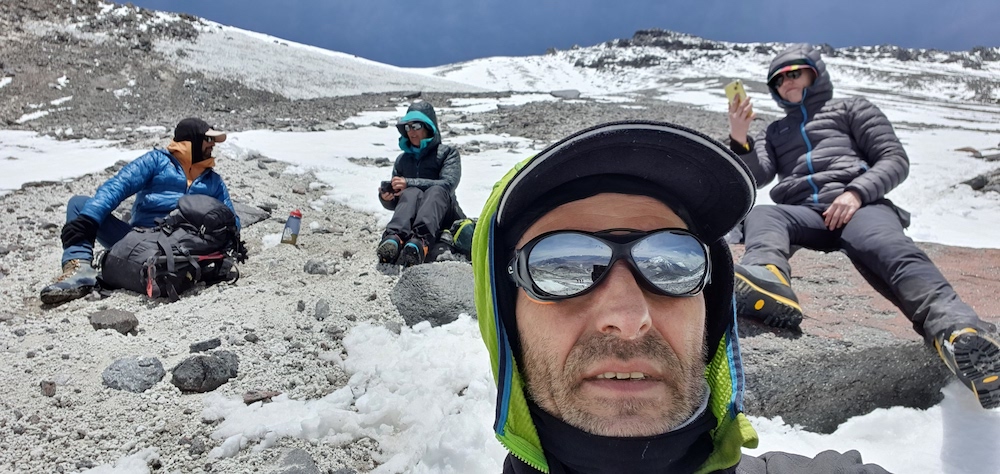
© Laurent Beaujard
What did this expedition bring you in the end, learning to manage yourself, building your self-confidence? Any lessons for the future?
Laurent : In fact, thanks to this expedition, I've answered the many questions and uncertainties I had before setting off. I know that my body always reacts well to altitude. It was difficult, but by listening to my sensations, I tried to do everything right, telling myself that it would pay off in the end, and in the end it did. When things get tough, you have to concentrate on the solutions. Keep well hydrated, relax, eat well, sleep well and share with the group in a good mood the special moments of an expedition in such a magnificent place. In short, savour the moment! I gained confidence in my physical abilities and mental resources, which I had to express in the most difficult moments. The solidarity within the group and the support I received from those close to me were also an important source of energy and comfort.
What advice would you give to anyone wanting to climb the Ojos del Salado?
Laurent : You have to respect this summit. The terrain is easy and there are no technical difficulties. A system of fixed ropes protects the Chilean summit. On the other hand, you do need to be in good physical condition, and as such a preparation based on endurance is more than recommended. The expedition is relatively short, so if possible, a short period at altitude (2 nights at 2,500-3,200 metres, for example) before setting off is a definite advantage. Just to get you started. Otherwise it's OK, but it's harder. The nights are cold and the days particularly hot. So you need to protect yourself. The choice of equipment is important. Then, during the expedition, you have to calmly take care of yourself. Sleep well, eat well and keep properly hydrated. The Atacama Desert is particularly dry.
What are your plans for the future?
Laurent: I'm planning to climb Baruntse in the Himalayas. Success on the Ojos del Salado was a prerequisite for this project. Building on the recent lessons learnt from this great expedition, I can now embark on this project with confidence and determination. Thank you again for your support during this trip, which will remain engraved in my memory.
Climb Ojos del Salado volcano at 6893 meters in Chile.
16 days | Many departures possible from November to April | Difficult level.
Aconcagua summit expedition (6,962 m)
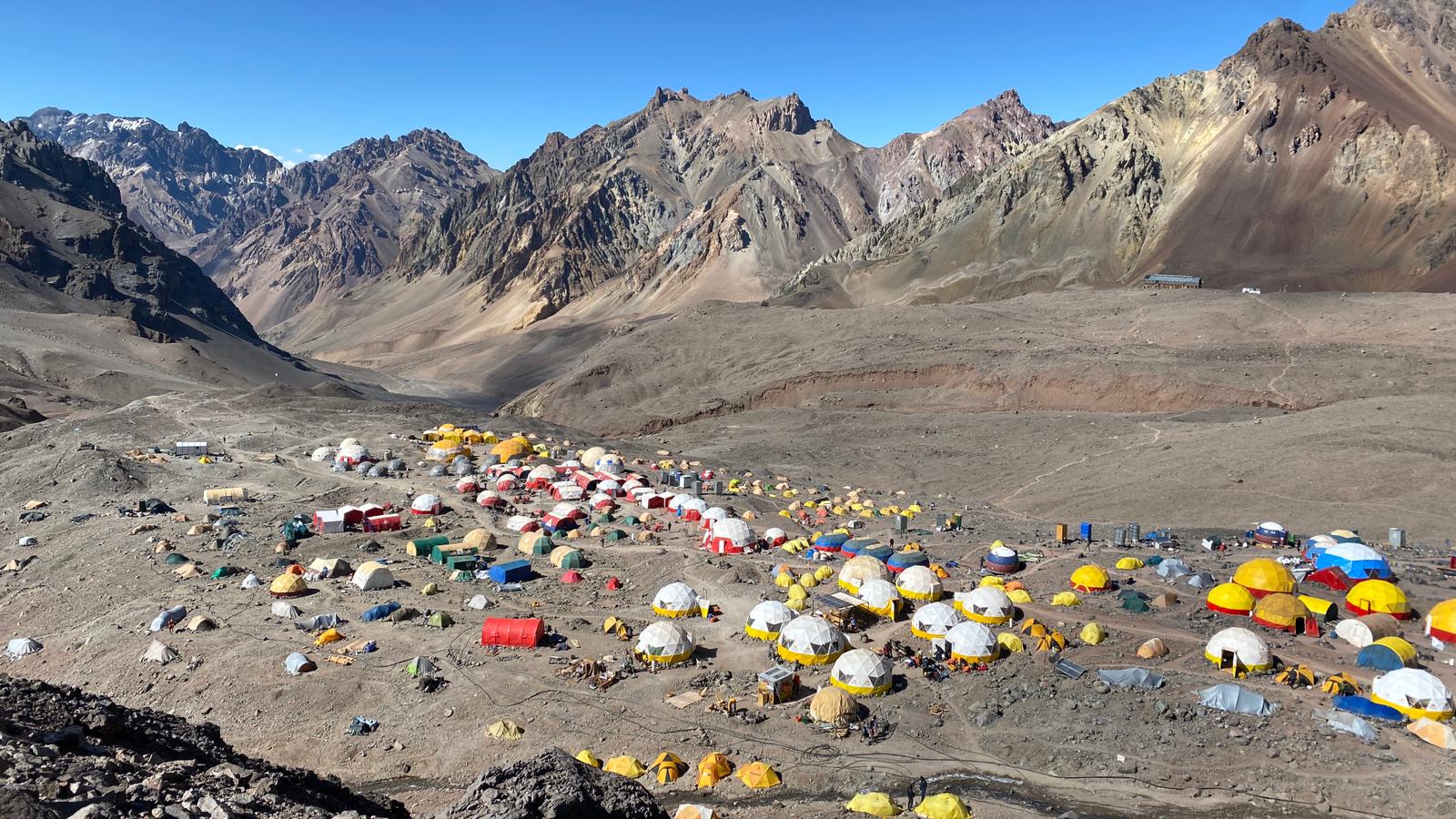
© Christophe Chamagne
Why Aconcagua?
Franck: This summit is part of a challenge that we set ourselves with Team 4dux to raise the profile of a charity that fights muscular dystrophy, Les Amis FSH. 4 summits: 4 continents, so after Europe and Africa, Aconcagua was the 3rd to be climbed, on the American continent.
Did you undertake any special preparation before setting off? If so, what?
Franck : Not particularly, because I do sport regularly: fitness, hiking, swimming, mountain biking, with a healthy lifestyle... But I do need good equipment.
How did the expedition go? Did you encounter any particular difficulties? And how did it go for you?
Franck: It went very well, was well organised, well prepared in terms of equipment and food supplements, particularly electrolytes... There was just one recurring problem for me at high altitude: sleep apnoea! On previous summits, I'd dealt with it, i.e. 8 to 10 nights without sleep, but this time I'd anticipated it by having a check-up with Ifremmont*, which prescribed ½ tablet of Diamox. I wanted to go without! Except that after 2 nights at 4000 I gave in and it really changed my life and enabled me to get through my nights better without suffocating every 30 seconds...
.jpeg)
Aconcagua summit © Christophe Chamagne
What did this expedition bring you in the end, learning to manage yourself, building your self-confidence? Any lessons for the future?
Franck: Once again, the mind is the strongest force and without it it's impossible to reach the summit! As usual in the mountains, listen to the guide's instructions and manage your hydration. We had the confidence and visualisation of reaching the summit, so we did it with a little help from the weather, which was relatively mild.
What advice would you give to anyone wanting to climb Aconcagua?
Franck: Good mental preparation and hydration. In the high mountains, it's stamina and endurance that pay off, not physical performance! There's no technical difficulty, but you have to be there to understand why some people give up just a few hundred metres from the summit...
What are your plans for the future?
Franck: As part of our Team4dux project, a summit on the Asian continent, a 7500 (Mustag Atha style in ski touring, appeals to me), before a 8000 metres +... It's the time and the budget that may be lacking... I do have in mind a 8000 metres + in 2026 for my 60th birthday. 😊
Climb Aconcagua at 6962 meters in Argentina, highest peak of America.
21 days | Departures possible from November to February | Difficult level.
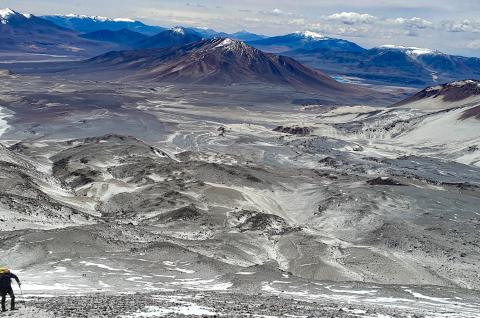
Climb Ojos del Salado volcano at 6893 meters in Chile
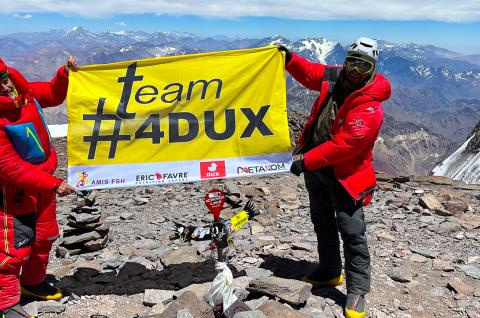
Climb Aconcagua at 6962 meters standard route in Argentina


 Expeditions Unlimited blog
Expeditions Unlimited blog